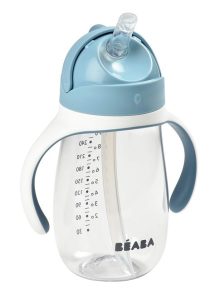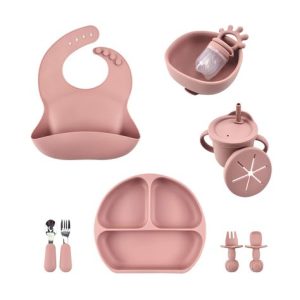For caregivers of newborns, bottle feeding can be a natural and convenient way to nourish your baby. However, there are times when the traditional cradled position might not be ideal. Side-lying bottle feeding is an alternative technique that can be beneficial for babies with certain feeding challenges or reflux.
This article will explore the benefits and considerations of side-lying bottle feeding, providing a step-by-step guide to ensure a safe and comfortable feeding experience for both you and your baby.
Benefits of Side-Lying Bottle Feeding
Side-lying bottle feeding offers several advantages, including:
Improved drainage:
This position can help prevent milk from pooling in the back of your baby’s throat, which can reduce the risk of gagging and spitting up.
Reduced gas:
Elevating your baby’s head and neck during feeding can help with gas bubbles rising up and causing discomfort.
Easier swallowing:
For babies with congestion or reflux, a side-lying position can make swallowing easier.
Promotes bonding:
Skin-to-skin contact is still possible while side-lying feeding, which is important for emotional development.
Important note: Side-lying feeding should not be used as a routine feeding position for healthy babies. If you’re considering using this technique, consult your pediatrician to ensure it’s suitable for your baby’s specific needs.

Considerations for Side-Lying Feeding
Before attempting side-lying feeding, there are a few things to keep in mind:
-
Your baby’s age and development: Side-lying feeding might not be suitable for newborns who lack head and neck control.
-
Feeding challenges: Discuss any feeding difficulties with your pediatrician to determine if side-lying feeding can address them.
-
Comfort and safety: Ensure you and your baby are comfortable and secure throughout the feeding session.
A Step-by-Step Guide to Side-Lying Feeding
Here’s a step-by-step guide for safe and comfortable side-lying bottle feeding:
-
Find a comfortable spot: Choose a quiet, well-lit area with a flat surface, like a bed or couch. Place pillows behind your back for support.
-
Prepare your feeding supplies: Have your bottle filled with formula or breastmilk at the appropriate temperature, along with a burp cloth nearby.
-
Position yourself: Lie down on your side with your head propped up on pillows. Your baby should face you, lying on their side along your forearm.
-
Support your baby: Use your other arm to cradle your baby’s back and head, ensuring their airway is clear. Their ear, shoulder, and hip should be stacked in a straight line.
-
Offer the bottle: Hold the bottle at an angle so the nipple fills your baby’s mouth with milk. Let your baby pace their feeding by pausing and offering them breaks.
-
Burp your baby: During and after feeding, pause to burp your baby by sitting them upright against your shoulder and gently patting their back.
-
Switch sides (optional): If feeding for a longer duration, you can gently switch sides halfway through to ensure even feeding and maintain your comfort.

Safety Tips for Side-Lying Feeding
Always prioritize safety when feeding your baby. Here are some key tips for side-lying feeding:
-
Stay awake: Never feed your baby while drowsy or sleep-deprived to avoid the risk of suffocation.
-
No distractions: Avoid using electronic devices or multitasking while feeding your baby. Focus on their feeding cues and needs.
-
Maintain alertness: Watch your baby closely throughout the feeding session to ensure they are swallowing comfortably and their airway remains clear.
-
Stop when full: Pay attention to your baby’s feeding cues and stop the feeding when they seem full or fussy.
When to Seek Professional Guidance
If you have any concerns about your baby’s feeding or experience difficulties with side-lying feeding, consult your pediatrician or a lactation consultant. They can assess your baby’s needs and provide personalized guidance for safe and effective feeding techniques.

Side-lying bottle feeding can be a helpful technique for babies with certain feeding challenges. By understanding the benefits, considerations, and proper positioning, you can ensure a safe and comfortable feeding experience for both you and your baby. Remember, always prioritize your baby’s health and well-being, and consult your pediatrician for any questions or concerns.
Building a Feeding Routine
Once you’ve familiarized yourself with side-lying feeding and consulted your pediatrician, you can start incorporating it into your baby’s feeding routine. Here are some tips:
-
Start slow: If you’re new to side-lying feeding, introduce it gradually alongside your usual feeding position.
-
Follow your baby’s cues: Pay attention to your baby’s hunger cues and feeding signals to determine when to offer a bottle.
-
Create a calm environment: Find a quiet, well-lit space that’s free from distractions for a peaceful feeding session.
-
Bonding time: Side-lying feeding allows for close skin-to-skin contact, which is important for emotional development. Talk softly to your baby and make eye contact.

Beyond the Bottle: Additional Feeding Tips
Side-lying feeding is a specific technique, but here are some general tips for bottle feeding that apply to any position:
-
Warm the bottle to a comfortable temperature: Test the temperature of the milk on your wrist before feeding. It should feel lukewarm, not hot.
-
Pace feeding: Let your baby control the pace of feeding by pausing and offering them breaks. Look for signs they’re full, like fussiness or turning away from the bottle.
-
Burp frequently: During and after feeding, burp your baby by sitting them upright against your shoulder and gently patting their back.
-
Cleanliness is key: Wash your hands thoroughly before each feeding and sterilize bottles and nipples according to manufacturer’s instructions.

Alternatives to Side-Lying Feeding
If you’re unable to comfortably practice side-lying feeding or it’s not recommended for your baby, here are some alternative positions:
-
Cradle hold: This is the most common feeding position, where you cradle your baby close to your body with their head resting in the crook of your arm.
-
Semi-upright hold: You can support your baby in an upright position on your lap, with their head resting on your forearm.
-
Football hold: This position can be helpful for babies with reflux. Cradle your baby upright against your side, with their head tucked under your chin and their legs supported by your other arm.
Conclusion: A Fed and Happy Baby
The most important thing is to find a feeding position that works best for you and your baby, ensuring they receive proper nourishment and feel comfortable and secure. Side-lying feeding can be a valuable tool in your caregiver toolbox, but remember to consult your pediatrician for guidance and address any concerns you may have.
